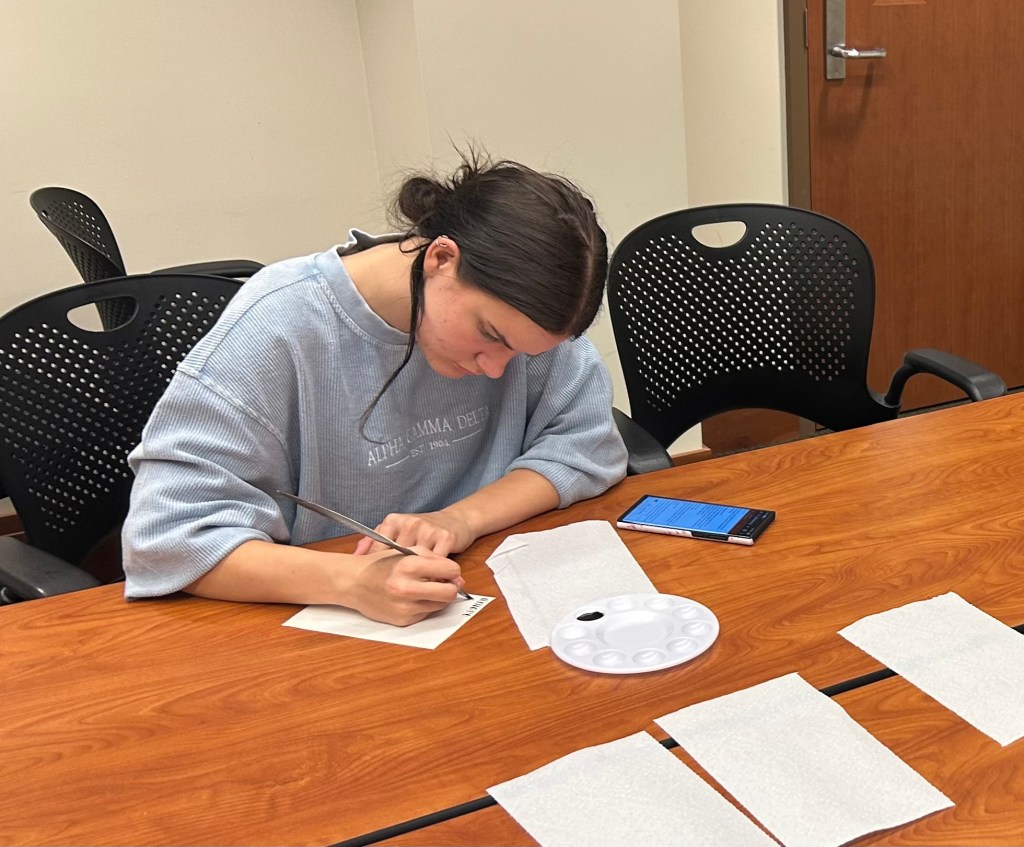October 21st, 2025



In December 2025, Purdue University Archives and Special Collections will debut “Beyond the Binding: Medieval Manuscripts from Farm to Fragments,” a public exhibition showcasing original medieval manuscripts. Many of these rare items are on loan through the Manuscripts in the Curriculum program, administered by Les Enluminures, which promotes hands-on manuscript study in academic settings.
How it began
This project began in July 2023, when Dr. Michael Johnston, professor in the Department of English, reached out to Libraries Assistant Professor Kristin Leaman to explore bringing the program to campus. Leaman took the lead on planning and logistics, working closely with Clinical Associate Professor Adriana Harmeyer, archivist for university history. Purdue University Archives and Special Collections would house and provide access to the manuscripts for the duration of the loan.
Together, Johnston, Leaman, and Harmeyer submitted Purdue’s application in fall 2023, and were accepted into the program in November 2023 for a loan in fall 2025.
Making it happen
Thanks to internal Purdue support, the team was able to bring the manuscripts to campus. Funding came from the Troutner Teaching Fund, Libraries and School of Information Studies, and Archives and Special Collections.
This collaborative effort across departments and units—despite busy schedules and tight timelines—made the exhibition and accompanying course possible.
Teaching with medieval manuscripts
The exhibition is a product of ILS 59500: Medieval Manuscript Studies, a new course co-taught by Leaman and Harmeyer during the fall 2025 semester. The course offers students a rare opportunity to engage directly with medieval manuscripts—learning not just how to analyze them, but also how to curate them for public display. It also fills a gap in medieval studies and library studies, as it provides students with valuable curatorial training.
The class covers everything from materials, ruling, text layout, and binding to paleography and cataloging. Students build curatorial skills and learn how to think about audience, storytelling, and exhibition design—insights that go far beyond typical academic work—and work as a team to develop a final polished product.
Johnston has also led two medieval Latin transcription workshops, giving students additional experience with the manuscripts in their original language.
Beyond the classroom
“Beyond the Binding” is the first exhibition curated as part of an ILS course and the first exhibition fully focused on medieval manuscripts in Purdue University Archives and Special Collections. It is public-facing, free, and open to the community. While the manuscripts support instruction in the classroom, the broader goal is to bring these materials to a wider audience. Harmeyer has collaborated with instructors from three different Purdue departments to study the manuscripts on loan as part of their curriculum. In addition, several researchers have conducted research on the manuscripts during individual appointments.
The exhibition has already drawn interest from other departments and institutions. A class from Grace College in Winona Lake, IN, will visit to view the manuscripts and participate in a hands-on manuscript-making session with Leaman.
The loaned manuscripts were selected strategically from a list provided by Les Enluminures, in consultation with the Purdue team. They span different centuries, regions, and languages, providing a rich overview of medieval European manuscript culture. Additionally, volumes and leaves from Archives and Special Collections’ permanent collection will be on display.
Whether you’re a student, researcher, or curious visitor, “Beyond the Binding” offers a rare glimpse into the world of medieval manuscripts—once hidden away in private collections, now accessible and alive with new meaning at Purdue University Archives and Special Collections.
Filed under: general, News and Announcements